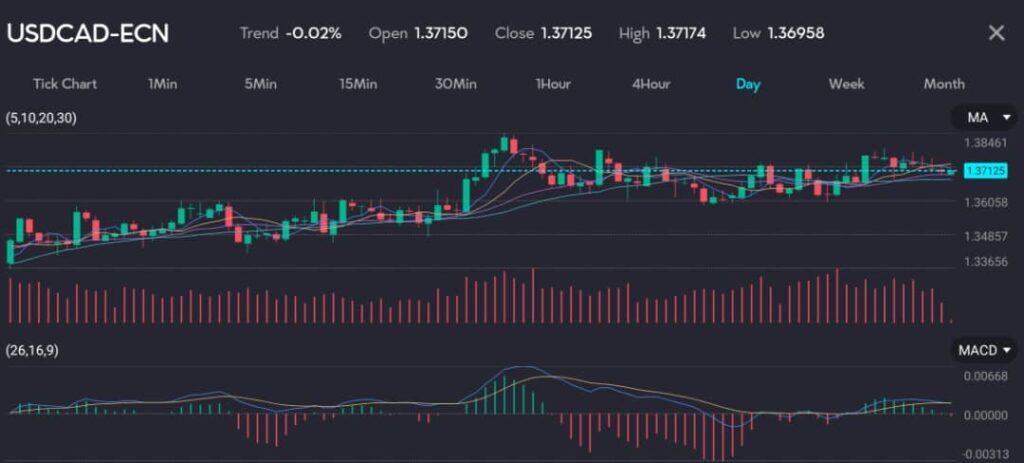Key points:
- Loonie touches a one-week high at 1.3699
- BoC minutes reveal the bank considered delaying rate cuts
- Price of U.S. oil dips 0.1%
- Bond yields rise across the curve
The Canadian dollar held its ground against the U.S. dollar on Wednesday, maintaining near its one-week high. Investors were analyzing the minutes from the Bank of Canada’s (BoC) recent meeting while keeping an eye on the upcoming Canadian inflation data.

See: Canadian dollar trading at 1.37125 as seen on the VT Markets app.
The loonie traded nearly unchanged at 1.3715 to the U.S. dollar, equivalent to 72.91 U.S. cents. Earlier, it reached its highest level since last Wednesday at 1.3699.
Equity market impact
The equity market’s performance this week has had a dragging effect on the currency. U.S. markets were closed for the Juneteenth holiday, but on Tuesday, the S&P 500 stock index hit a record high. As Canada is a major commodities producer, including oil, the loonie often benefits from increased risk appetite.
However, significant movements in the USD-CAD currency pair will likely wait until the release of Canada’s inflation report for May on June 25. This report is expected to be the main catalyst to inject some volatility back into the currency pair.
BoC’s inflation concerns and policy decisions
The Bank of Canada has expressed concerns about the progress on cooling inflation. The minutes revealed that the bank considered waiting an extra month before cutting interest rates but decided to ease monetary policy on June 5. Investors now see a 64% chance that the central bank will ease further in July.
Oil prices, a significant factor for the Canadian economy, dipped by 0.1% to $81.49 a barrel, though they remained close to a seven-week high.
Also read: Oil prices rise on inventory drop and higher demand forecast
Rising government bond yields
Canadian government bond yields rose across the curve. The 10-year yield increased by 1.8 basis points to 3.280%, after hitting its lowest level in four and a half months at 3.258% during Tuesday’s session.
This cautious forecast suggests that the Canadian dollar may continue to hover around its current levels until more concrete economic data is available. The market’s reaction to the upcoming inflation report will be crucial in determining the next steps for the BoC and the overall economic outlook for Canada.







